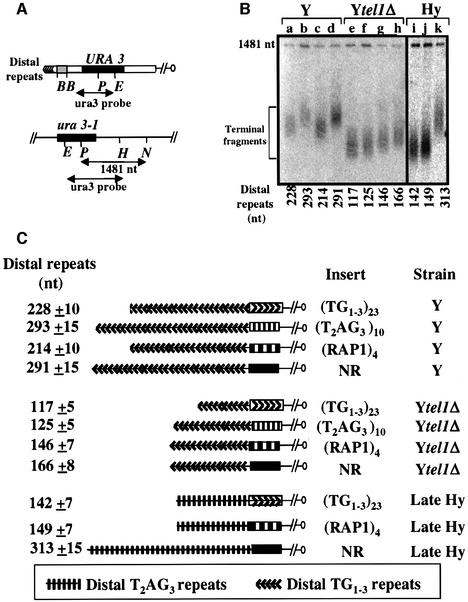Fig. 1. In tel1Δ cells TG1–3 and T2AG3 repeats are counted by Rap1-independent pathways. (A) Schematic representation of the modified VII-L telomere used to determine the counting capacity of the internal sequence. The positions of the EcoRV (E), SapI (P), NaeI (N), HindIII (H) and BamHI (B) restriction sites are indicated. The gray box bracketed by BamHI sites indicates the position of the inserted sequences (see Materials and methods). (B) Genomic DNA of the Y, Ytel1Δ and Hy strains was digested with SapI and NaeI and hybridized with the ura3 probe. The median length of the telomeric restriction fragment was calculated using a set of molecular weight markers (not shown) and the non-telomeric 1481 nt fragment as an internal control. In order to obtain the length of the distal telomeric repeats, 378 nt was subtracted from the size of the measured terminal fragment, as shown below each lane. The inserted sequence is (TG1–3)23 in lanes a, e and i; (T2AG3)10 in lanes b and f; (RAP1)4 in lanes c, g and j; and NR in lanes d, h and k. (C) Schematic representation of the results.

An official website of the United States government
Here's how you know
Official websites use .gov
A
.gov website belongs to an official
government organization in the United States.
Secure .gov websites use HTTPS
A lock (
) or https:// means you've safely
connected to the .gov website. Share sensitive
information only on official, secure websites.
